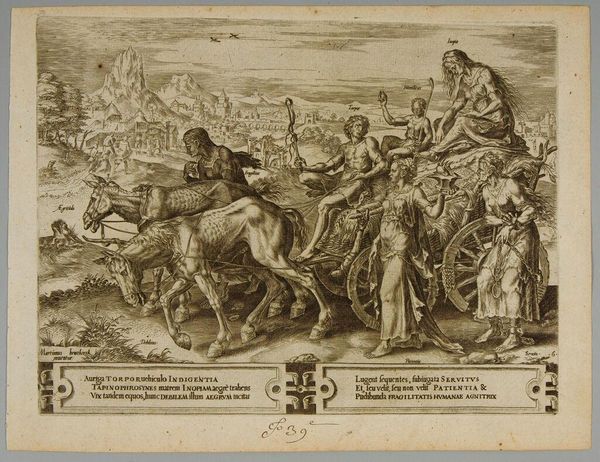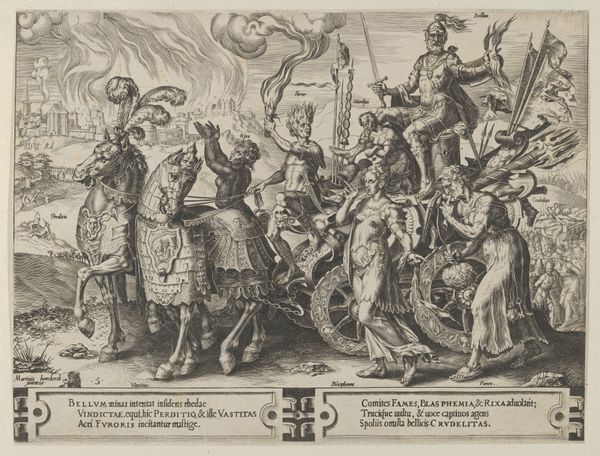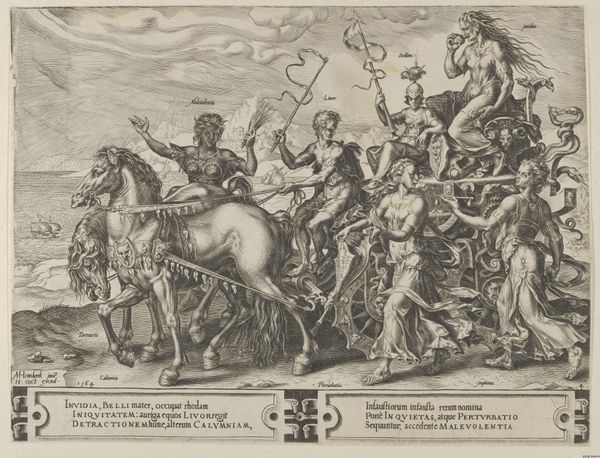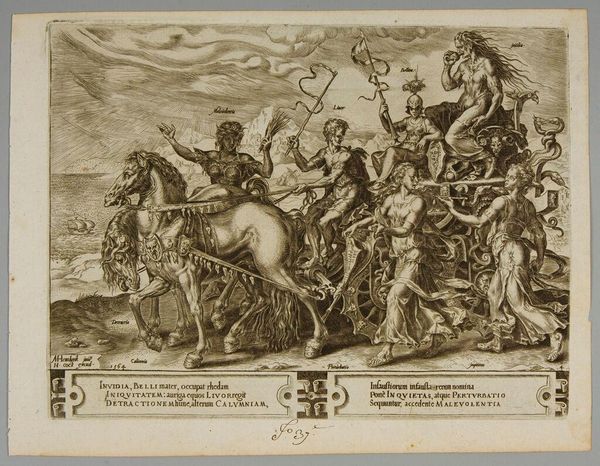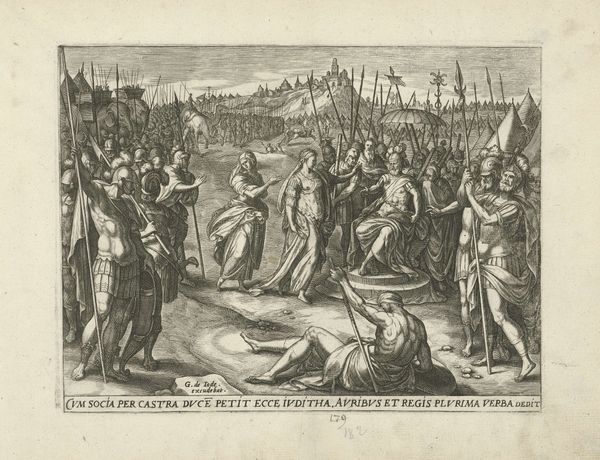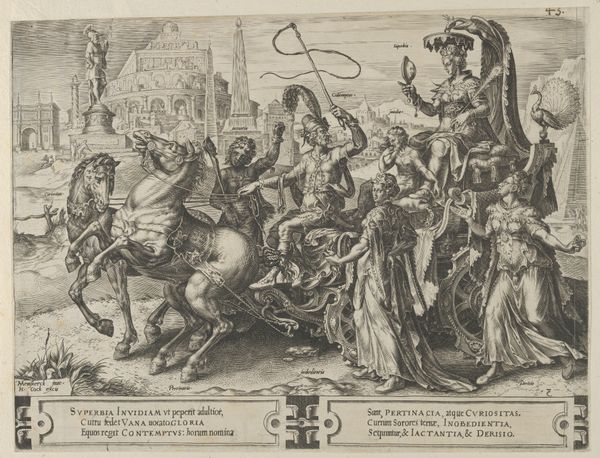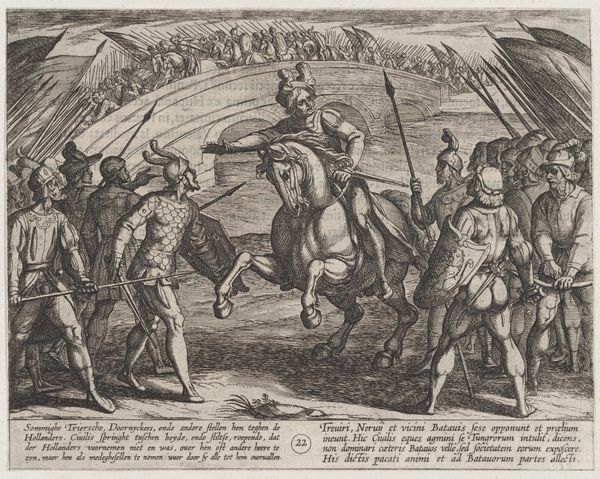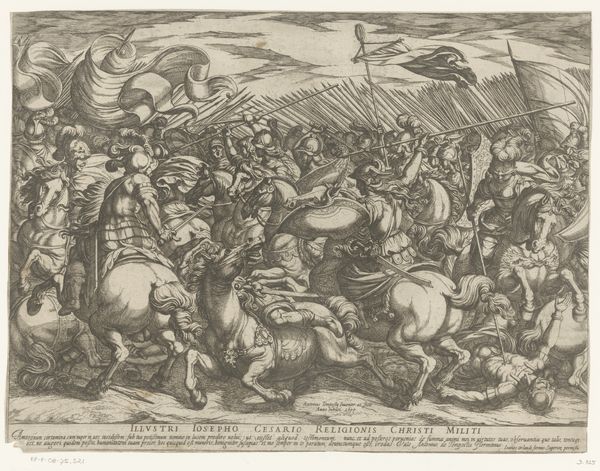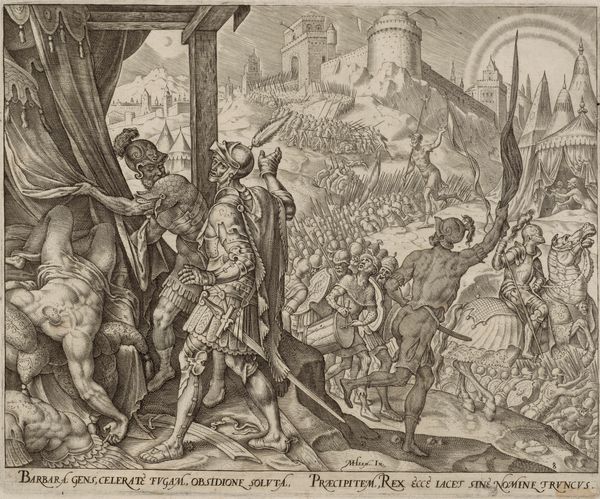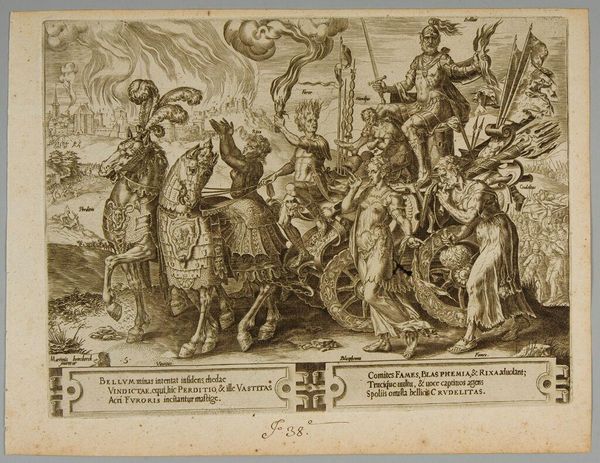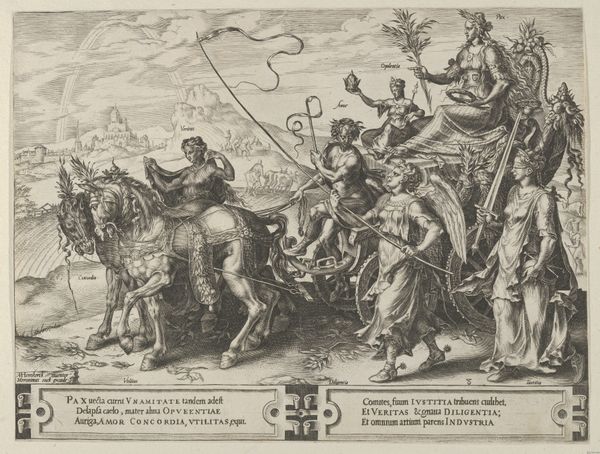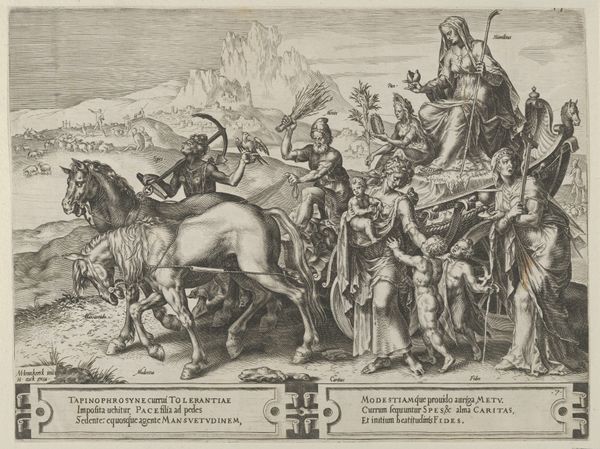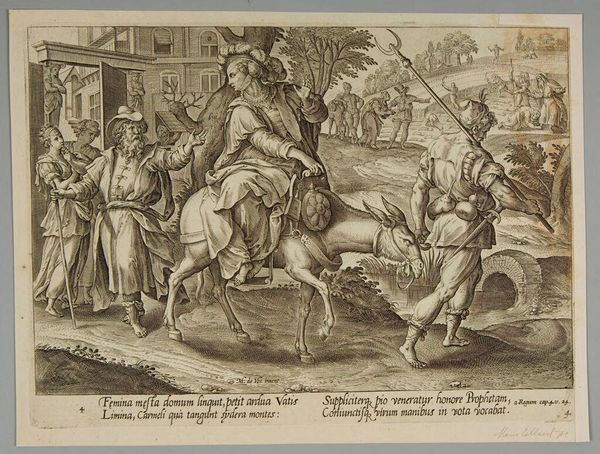
print, engraving
#
allegory
# print
#
mannerism
#
figuration
#
line
#
history-painting
#
engraving
Dimensions: 194 mm (height) x 265 mm (width) (plademaal)
Editor: So, this is "The Triumph of Time," an engraving by Philips Galle, dating back to the mid-1560s. It feels incredibly detailed and allegorical. The figures are very dramatic, and the scene looks chaotic. What do you see in this piece? Curator: Indeed, it's a powerful piece steeped in symbolism. Notice how Tempus, or Time, is enthroned on a chariot, signifying his inescapable dominion. The chariot itself seems to be crushing ruins; do you see the decaying buildings in the background? What do those broken remnants suggest to you? Editor: They feel like the inevitable destruction of everything over time, perhaps empires or great achievements eventually crumble. Curator: Precisely. And consider the figures drawing the chariot. We have the seasons personified – Autumn, Winter, Spring, and Summer represented around the wheels of time’s vehicle. Why do you think Galle chose to depict Time in this manner, escorted by the seasons? Editor: Maybe to show time’s cyclical nature? Like how seasons come and go, so too do all things, marching onward with relentless momentum. Curator: An excellent observation. It evokes a profound sense of transience but also the persistent return of cycles within the grand narrative of Time. Consider how this theme resonates even today. Does this give you a renewed perspective of it? Editor: It really does. I originally saw it as a straightforward depiction of destruction, but now it also has a dimension about life continuing even after decay. Curator: Exactly! This reflects the nature of cultural memory and continuity—the power of symbols to speak across centuries. Editor: I hadn't considered that depth before. Thank you!
Comments
No comments
Be the first to comment and join the conversation on the ultimate creative platform.
